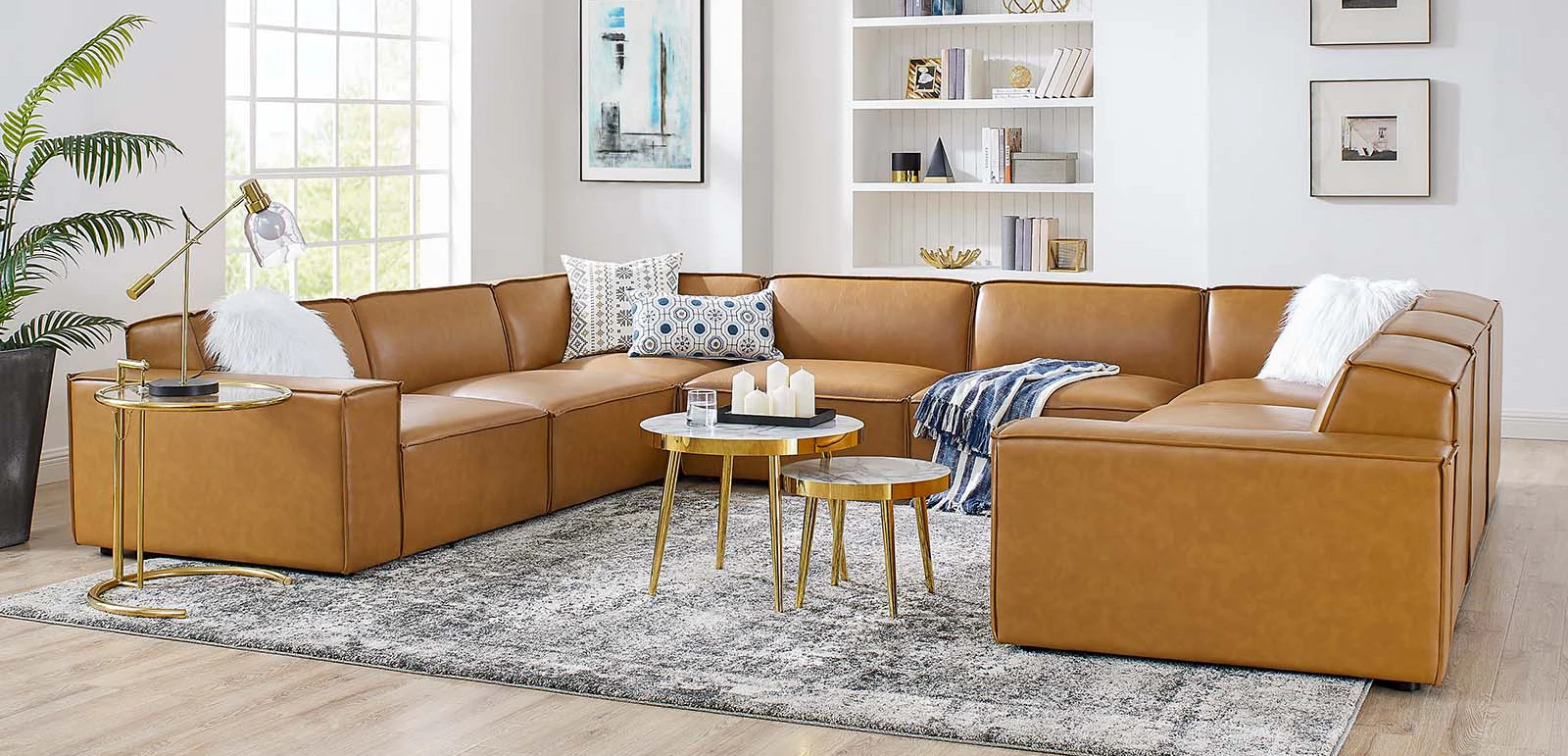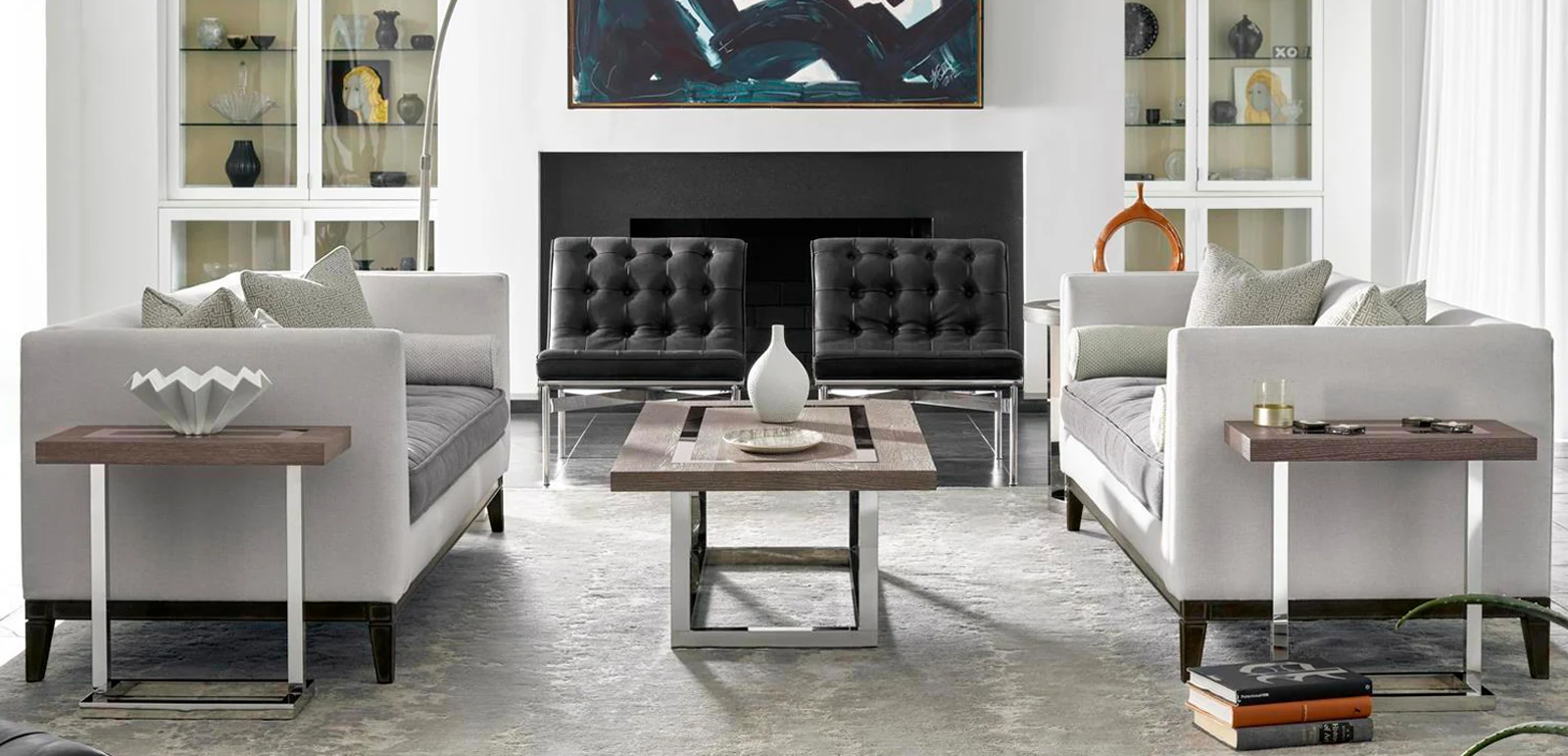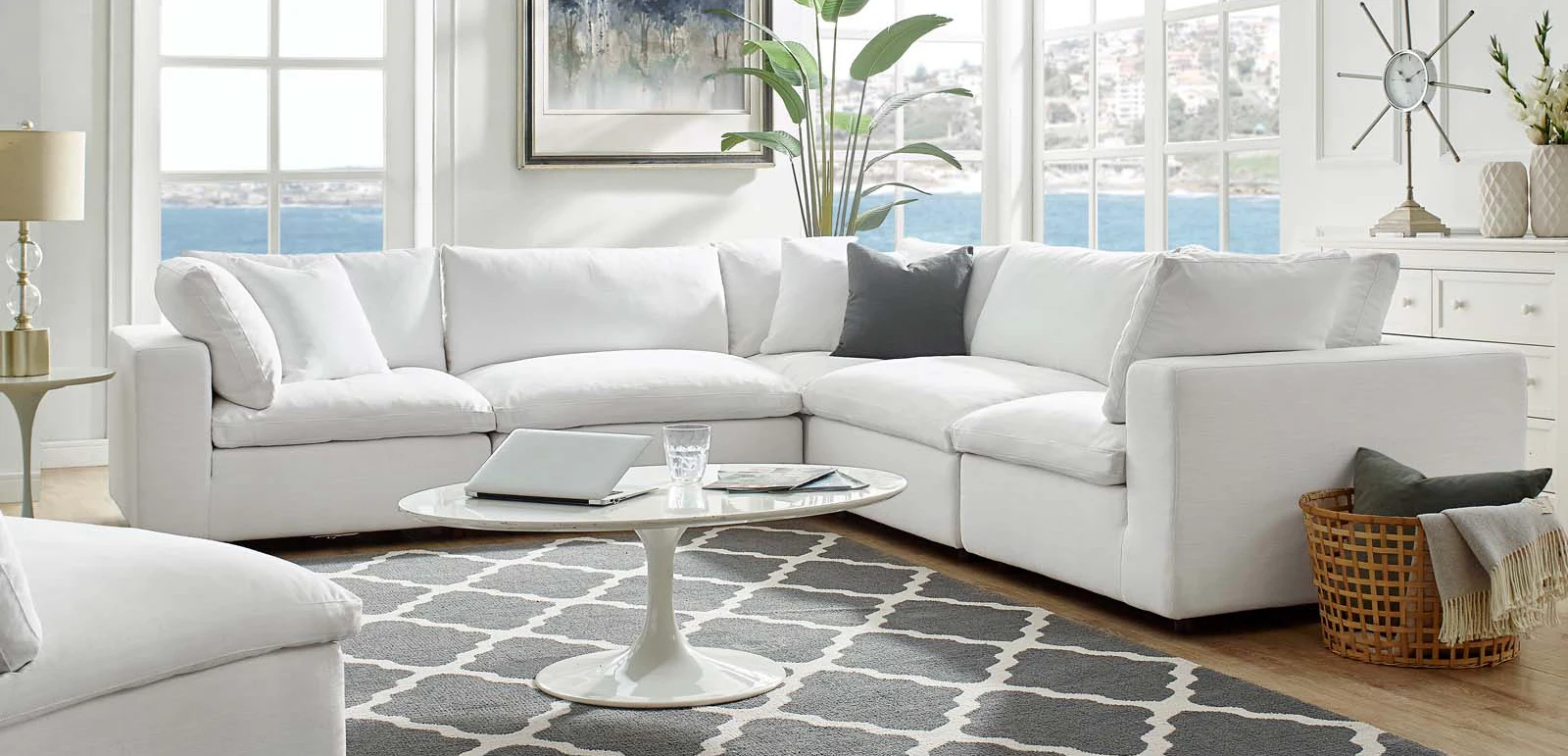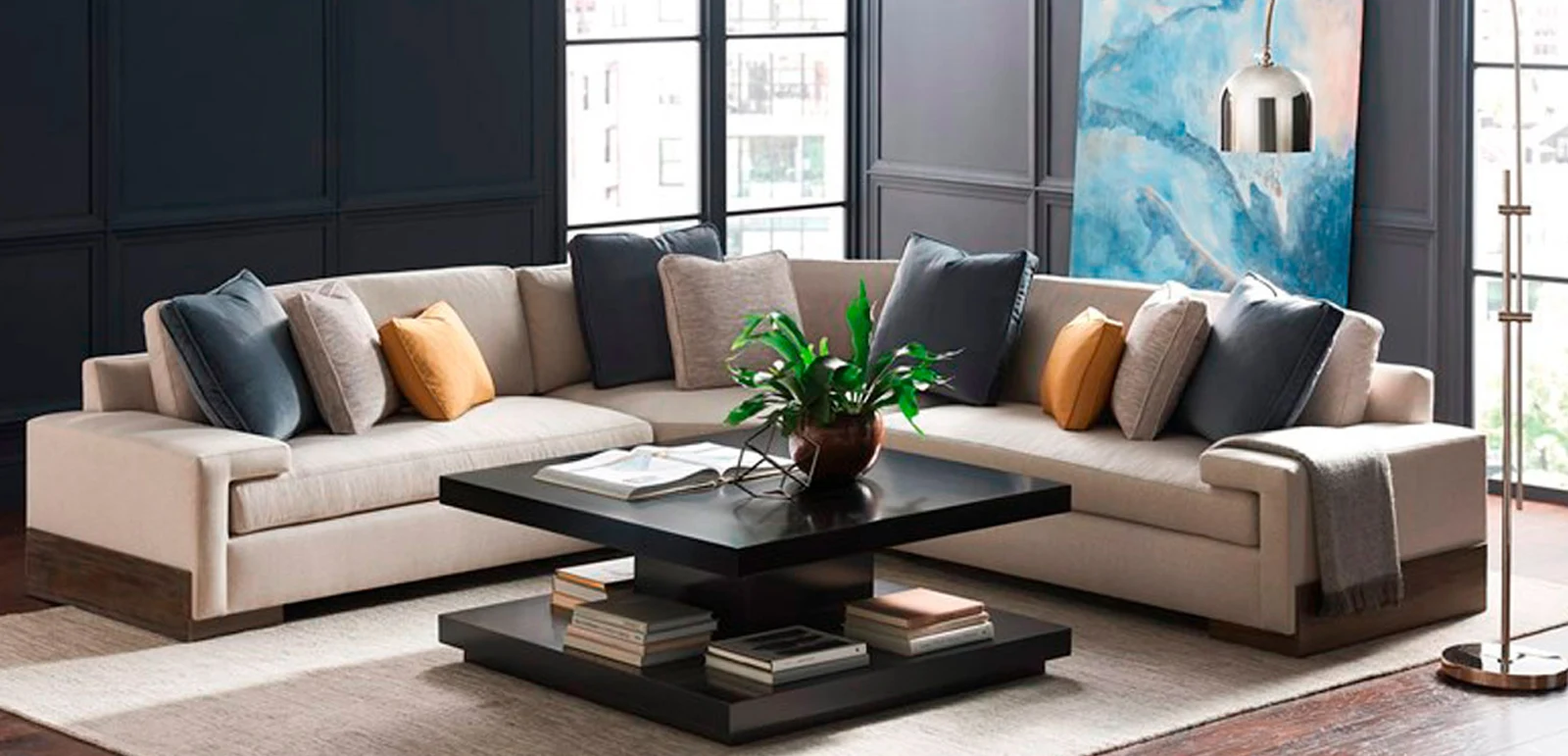When And Why You Should “Float” Your Sofa
Placing a sofa snug against a wall may not be the ideal choice for any room. In a compact space, it often results in an empty area at the room's core. Pulling your sofa away from the wall, it allows light to circulate, making the room feel larger than it really is. In bigger rooms, positioning furniture toward the center of the room creates a more intimate and inviting atmosphere. Even when positioning your sofa against the wall, it should never actually touch the wall — at the very least, a small gap should always be left between the sofa and the wall.
Positioning a sofa at the center of your room, referred to as a "floating sofa," imparts a stylish, contemporary, and welcoming ambiance when done thoughtfully. Floating your sofa offers some benefits:

1.
Contemporary Elegance: Introduce a modern and sophisticated aesthetic to your living space by floating your sofa, departing from the conventional or traditional wall-hugging sofa setup.

2.
Inviting Ambience: Placing the sofa in the room's center fosters an inviting and open seating area, promoting natural conversation and interaction and creating a more intimate atmosphere.

3.
Spatial Versatility: Floating a sofa provides flexibility in your spaces and allows you to define zones of the room without constraints imposed by fixing furniture against the walls. This is especially effective in "great rooms" and other multifunctional living areas. In smaller rooms, floating your sofa maximizes the available space by avoiding the waste of wall areas.

4.
Aesthetic Emphasis: A centrally positioned sofa becomes a captivating focal point of your room, allowing you to showcase the sofa's design and details that wouldn't be seen if placed against a wall. You can enhance the styling of a floating sofa with other pieces of furniture including console tables and decorative accessories.
It's essential to ensure that there is ample room around the floating sofa for easy movement and that it doesn't obstruct pathways or room entrances. Consider the placement of other pieces, such as coffee tables and side tables, to showcase this layout effectively.
The choice between the traditional wall-hugging sofa setup and the floating sofa arrangement depends on your individual style, living room dimensions, and functional requirements.
Whether a room is large or small, you should avoid placing your sofa in a manner that obstructs doorways, heating or cooling vents, or low windows that dip below the sofa's height. In the interest of safety, it's equally important to maintain a safe distance between your sofa and fireplaces or staircases.



